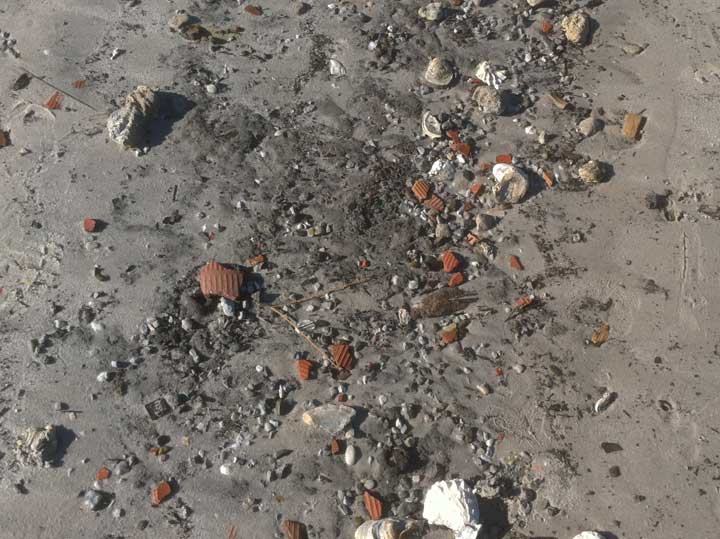Low water conditions expose shards of turpentine pots along bayou shoreline
During winter months, water levels in the Choctawhatchee Bay and adjoining bayous are lower than other seasons. Northerly winds blow water out into the gulf, exposing more bay and bayou shoreline.
Combined with low tide conditions, Hogtown Bayou in Santa Rosa Beach reveals a bit more, as shards of old turpentine pots can be easily found.
Back in the late 1800s and early 1900s the area of Hogtown Bayou was the community of Santa Rosa, home to a general store, sugar cane syrup factory, a cannery, hotels and a variety of businesses. It was also the location of two turpentine mills. No doubt discards from the days of the mills operation, these tiny pieces of history remain on the bayou floor to this day around Cessna Landing.

Turpentine was harvested from long leaf pine trees all over Walton County and Northwest Florida back then, and evidence of the activity may be found in the area forests as well.
To view a collection of turpentine pots, visit the Coastal Branch Library, 437 Greenway Trail, Santa Rosa Beach.
About the turpentining in our area:
Naval stores was the term for products that were essential to the production and maintenance of wooden ships such as tar and pitch, which were used to seal the bow and deck. In the 17th and 18th centuries, both the English and Spanish made profits by exploiting the vast pine forests in Northwest Florida for this purpose.
Turpentine is a derivative of tree resin used in paint and varnish solvents, disinfectants, liniments, medicated soaps, lamp fuel, and perfume. Rosin is used to make paper, soap, and varnish.
In the 19th century, lumber mills were built along the waterways that lead to the bayous because they provided both water power and a way to transport cut planks to the port of Pensacola.
Information courtesy Heritage Museum of Northwest Florida, and “The Way We Were” a publication of the South Walton Three Arts Alliance, Inc.

